The time I started a little library
When I was a child, I had a great collection of books. Everything from Dr. Seuss to Tolkien. Some were books I read and others were books I aspired to read. I was also a precocious child. One summer, I decided it would be beneficial to open a library with all of my books, so I studied how our local library worked. I went as often as I could and became enamored with the Dewey Decimal System, library cards, and borrowing procedures. I also loved that the library was a place you could go to learn, and not just from books. You could go and read for hours of course, but there were also events and classes. Libraries create community.

(Bonus - this me in my reading chair with one of my books.)
So, I turned my book collection into a library. Books were sorted according to Dewey’s classification. I had numbers printed out and I borrowed some packing tape (the clear kind) so I could create a similar feel to the numbers on book spines at the library. I created pockets for the rental card inside the books. This way, I could keep track of who borrowed the book from time to time. I created library cards. I became obsessed.
Of course, in the end, I recognized that real libraries were better at this than I was. But along the way, my neighbors borrowed books and hung out at my house, discussing what they were reading and all of the things we learned. It was magical.
Anyone who knew me growing up won’t be surprised by this. I did this all the time. I still do. I created worlds where I could dive into my curiosity.
This is a quality I love finding in people (especially folks I want to invest in). People who are deeply curious are my people. Entrepreneurs are solving big problems and it takes a lot of grit to work on solving them for decades. I’m not sure how you’d make it through that journey without a deep sense of curiosity.
Do I need a beautiful pitch deck?
There’s a debate heating up on Twitter around pitch decks and design. I found it from the tweet below (not sure if that’s where this originated…this debate comes up every once in while, so it’s not the first time this is popping up).
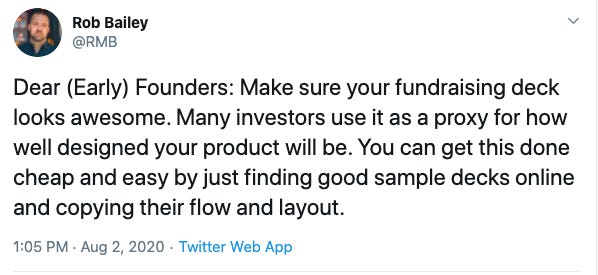
Here’s the thing, a good design IMO is irrelevant, for the most part. That being said, content is so very important, which is what I think Rob is partly arguing for here. A good deck is meant to get someone interested. So, it needs to tell a good story, have the right information, and present it clearly. It doesn’t take great design to do this. It does however take a little research into what the deck should look like, from a flow perspective. Good design certainly doesn’t hurt, but it shouldn’t be what decisions are predicated on.
Case in point. Check out these slides from Artemis’ (FKA Agrilyst) 2015 investor presentation. Is it pretty? Absolutely not. In fact, it’s pretty cringe worthy. Does it tell the story? Sure. There’s a lot of data out there on the farm and someone needs to rein it in. Why? Because you can’t make decisions without it, and it’s really expensive to collect and analyze manually (not to mention, you probably don’t have a data scientist on site). Enter Agrilyst. We’ll integrate it all and help you make better production decisions. This saves you time, energy, and money.
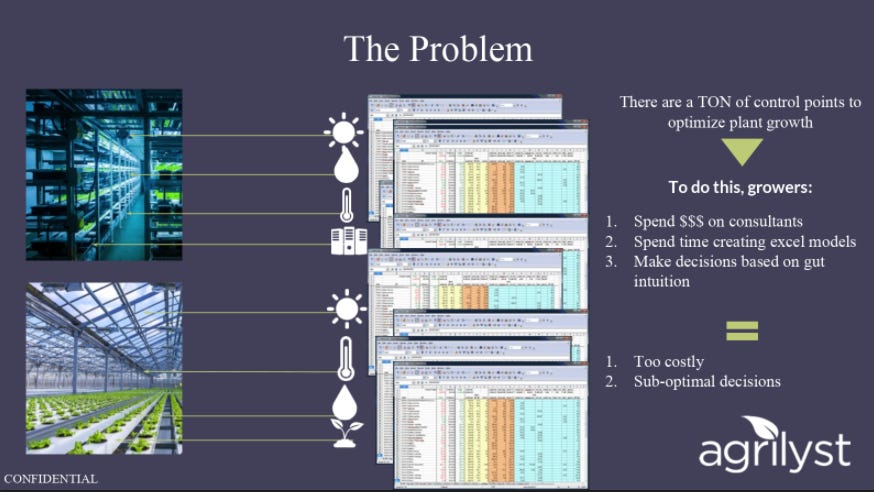
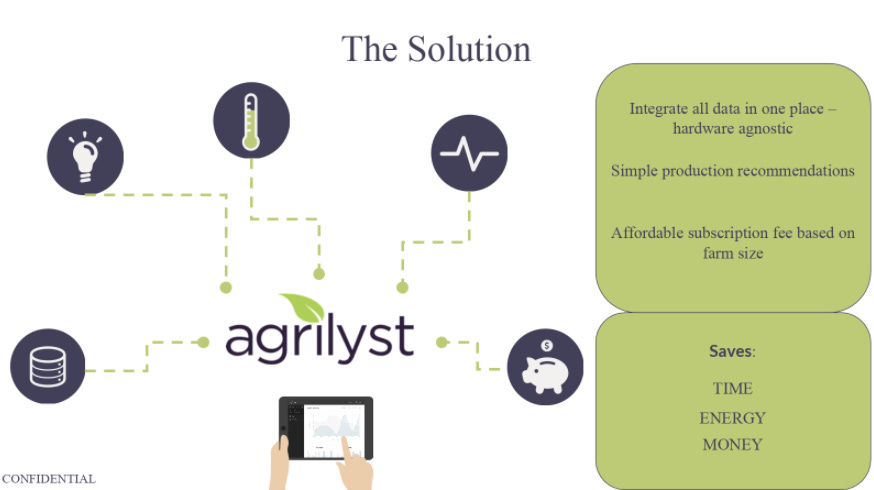
These slides eventually evolved to the ones below (from 2016) with much cleaner design, but similar content.
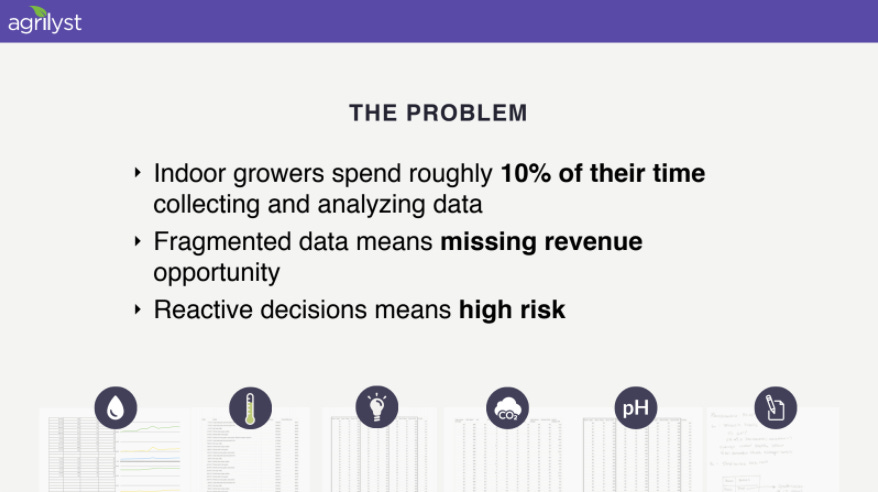
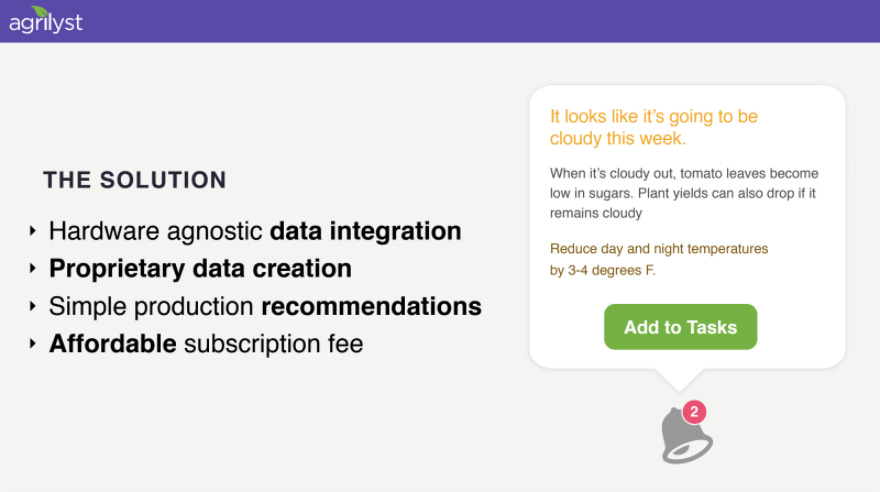
Which then evolved again and again over time. But, the core of the problem never changed. Too much of the agriculture world still lives on pen-and-paper and it’s time to digitize. This transformation will reduce food safety and compliance risk, operational risk, and increase margins. And margins in agriculture are a big market.
I spend my free time investing in women, who are often first time founders. Having a nicely designed deck is great, but if that’s the barrier for entry, you’re already limiting the pool to a very narrow subset of people. I’m a deck fanatic now. Bad decks are painful. Look at my first deck. It’s not pretty; but someone saw the vision and invested anyway. There’s a difference between good and pretty.
I also think the connection between product and decks is somewhat silly. We’re a B2B SaaS company. We have product designers who work on UI/UX. They’re not also working on our deck. If they were, we’d be allocating resources wrong. I work on the deck. This is less true for consumer products FWIW. If you’re designing a makeup brand for example, I’d expect to see that brand personality come through in the deck. Because design/marketing is your company.
All that said, I hope investors look beyond the polish. We’re entrepreneurs. We’re scrappy. You like that about us. Decks should tell the right story. Look beyond the nice (or awful) design for the substance. Judge us on that.
For founders who want some help on your deck, I’m trying out a new platform called Pick My Brain and offering time slots for deck collaboration. Shall we say, all hands on deck (sorry, I had to)? If the cost is prohibitive, email me. We’ll work something out. I don’t want cost to stand in the way of you getting your business out there and funded.
People to follow
Here are some awesome folks to follow on Twitter.
For a good laugh - Sarah Cooper
For helpful startup advice - Brett Brohl
For VC transparency - Mac Conwell
For the day-to-day startup journey - Amanda Goetz



